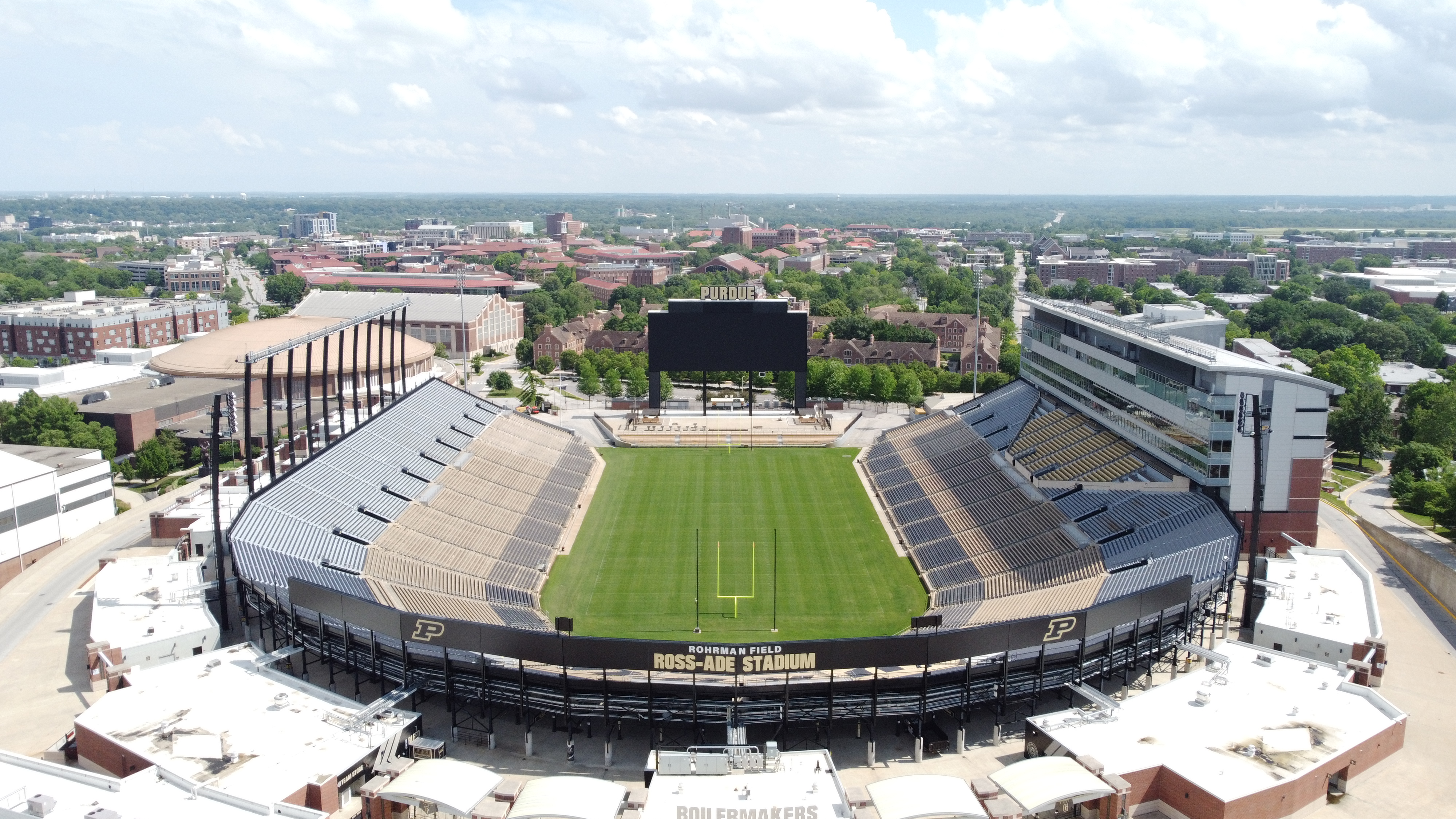America's Top 12 Most Aesthetically Pleasing Religious Colleges
Embarking on a journey through America's most visually stunning religious colleges is akin to a pilgrimage of the senses, where architecture and faith converge to create sanctuaries of learning and spirituality. These institutions, nestled in diverse landscapes, offer more than just a place of study; they are havens of aesthetic beauty and spiritual reflection. Each college is a testament to the architectural prowess and religious devotion of its founders, standing as a beacon of cultural and historical significance. Religious colleges in America have a rich history, often rooted in the early days of the nation when education and religious instruction were intertwined. These institutions were established by various religious denominations with the aim of fostering intellectual growth alongside spiritual development. The architectural styles of these colleges often reflect the historical periods in which they were founded, ranging from Gothic Revival to Colonial and beyond. As we explore the campuses, we will see how history has shaped their aesthetic and spiritual identities, creating spaces that honor tradition while embracing modernity.
Gothic Grandeur: Notre Dame and Its Architectural Majesty

The University of Notre Dame, a Catholic institution in Indiana, is renowned for its Gothic Revival architecture that captivates visitors with its grandeur and spiritual symbolism. The iconic Golden Dome, the Basilica of the Sacred Heart, and the Grotto of Our Lady of Lourdes are just a few of the architectural marvels that define its campus. The intricate stonework and stained glass windows of these structures not only reflect the religious heritage of the university but also serve as a source of inspiration for students and visitors alike. Notre Dame's commitment to preserving its architectural legacy while integrating modern facilities exemplifies the harmonious blend of tradition and innovation that characterizes many religious colleges.
A Quaker's Vision: The Serene Simplicity of Swarthmore College

Swarthmore College, founded by the Religious Society of Friends (Quakers) in Pennsylvania, embodies the Quaker values of simplicity and harmony with nature. The campus is a tranquil oasis, with its rolling lawns, arboretum, and understated yet elegant buildings. The architectural style of Swarthmore reflects the Quaker emphasis on functionality and modesty, creating an environment that encourages contemplation and community. The college's commitment to sustainability and environmental stewardship further enhances its aesthetic appeal, making it a model of how religious values can be integrated into campus design. Swarthmore's serene beauty and Quaker ethos offer a unique perspective on the relationship between faith and architecture.
Harvard Divinity School: A Blend of Tradition and Modernity

Harvard Divinity School, part of the prestigious Harvard University in Massachusetts, represents a fusion of historical and contemporary architectural styles. The Andover-Harvard Theological Library, with its classical facade, stands alongside modern structures like the Center for the Study of World Religions, showcasing the school's commitment to both tradition and innovation. The campus's diverse architectural elements reflect the inclusive and interdisciplinary nature of the Divinity School, which embraces a wide range of religious traditions and academic pursuits. This blend of old and new creates a dynamic environment that fosters intellectual exploration and spiritual growth, making Harvard Divinity School a unique and aesthetically pleasing religious college.
The Spiritual Landscape of Pepperdine University

Perched on the cliffs of Malibu, California, Pepperdine University offers breathtaking views of the Pacific Ocean, providing a stunning backdrop for its Mediterranean-inspired architecture. Founded by the Churches of Christ, Pepperdine's campus is designed to enhance the spiritual and academic experience of its students. The campus's natural beauty, combined with its elegant buildings and serene environment, creates a space that encourages reflection and community engagement. The Stauffer Chapel, with its striking stained glass windows and ocean views, serves as a focal point for spiritual life on campus. Pepperdine's commitment to integrating faith, learning, and service is reflected in its aesthetically pleasing and spiritually enriching environment.
The Neo-Gothic Charm of Princeton Theological Seminary

Princeton Theological Seminary in New Jersey is renowned for its Neo-Gothic architecture, which exudes an air of scholarly tradition and spiritual devotion. The seminary's campus is adorned with grand stone buildings, pointed arches, and intricate carvings that reflect its Presbyterian heritage. The Speer Library and Miller Chapel are architectural highlights, offering spaces for study and worship that inspire awe and reflection. The seminary's commitment to theological education and research is mirrored in its majestic campus, which serves as a sanctuary for students and scholars seeking to deepen their understanding of faith and history. Princeton Theological Seminary's architectural charm and academic excellence make it a standout among religious colleges.
The Artistic Splendor of St. Olaf College

St. Olaf College, affiliated with the Evangelical Lutheran Church in America, is located in Northfield, Minnesota, and is known for its picturesque campus and commitment to the arts. The college's architecture features a blend of traditional and contemporary styles, with notable buildings like the Boe Memorial Chapel and the Center for Art and Dance. The campus's rolling hills and lush greenery provide a serene setting for artistic and spiritual pursuits. St. Olaf's dedication to fostering creativity and cultural engagement is evident in its vibrant arts programs and aesthetically pleasing environment. The college's unique blend of artistic splendor and religious tradition creates a campus that inspires both personal and communal growth.
The Jesuit Influence at Georgetown University

Georgetown University, the oldest Catholic and Jesuit institution in America, is located in the heart of Washington, D.C. Its campus is a testament to the Jesuit tradition of education, with its historic buildings, such as Healy Hall, showcasing Romanesque and Gothic architectural styles. The university's commitment to social justice and intellectual inquiry is reflected in its diverse and inclusive community. Georgetown's campus serves as a hub for academic and spiritual exploration, with spaces like Dahlgren Chapel providing opportunities for worship and reflection. The university's blend of historical architecture and modern facilities creates a dynamic environment that honors its Jesuit heritage while embracing contemporary challenges.
The Eclectic Beauty of Southern Methodist University

Southern Methodist University (SMU) in Dallas, Texas, offers an eclectic mix of architectural styles, reflecting its Methodist roots and commitment to academic excellence. The campus features Georgian Revival buildings, such as Dallas Hall, alongside modern structures like the Meadows Museum, which houses an impressive collection of Spanish art. SMU's beautifully landscaped grounds and vibrant arts scene create an inviting atmosphere for students and visitors. The university's dedication to fostering intellectual and spiritual growth is evident in its diverse academic programs and community outreach initiatives. SMU's eclectic beauty and Methodist heritage make it a unique and inspiring place of learning.
The Tranquil Majesty of Brigham Young University

Brigham Young University (BYU), owned by The Church of Jesus Christ of Latter-day Saints, is located in Provo, Utah, and is known for its stunning mountain backdrop and harmonious campus design. The university's architecture reflects a blend of traditional and modern styles, with notable buildings like the Harold B. Lee Library and the BYU Museum of Art. The campus's natural beauty and peaceful environment create an ideal setting for academic and spiritual pursuits. BYU's commitment to integrating faith and learning is evident in its rigorous academic programs and emphasis on moral and ethical development. The university's tranquil majesty and religious mission make it a standout among religious colleges.
The Benedictine Heritage of Saint John's University

Saint John's University, located in Collegeville, Minnesota, is affiliated with the Order of Saint Benedict and is known for its stunning campus and rich Benedictine heritage. The university's architecture features a blend of traditional and modern styles, with notable buildings like the Abbey and University Church, designed by renowned architect Marcel Breuer. The campus's natural beauty and commitment to sustainability create a serene environment for study and reflection. Saint John's dedication to fostering community and spiritual growth is evident in its vibrant campus life and emphasis on service and stewardship. The university's Benedictine heritage and architectural splendor make it a unique and inspiring place of learning.
The Spiritual and Academic Harmony of Fordham University

Fordham University, a Jesuit institution in New York City, offers a beautiful campus that blends Gothic and modern architectural styles. The Rose Hill campus, with its historic buildings and lush green spaces, provides a tranquil oasis in the bustling city. Fordham's commitment to academic excellence and social justice is reflected in its diverse academic programs and community engagement initiatives. The university's Jesuit heritage emphasizes the integration of faith, learning, and service, creating a dynamic environment for intellectual and spiritual growth. Fordham's spiritual and academic harmony makes it a unique and inspiring place of learning.
As we conclude our visual pilgrimage through America's most aesthetically pleasing religious colleges, we are reminded of the enduring legacy of these institutions. Each college, with its unique architectural style and religious heritage, offers a sanctuary for learning and spiritual reflection. These campuses are not only places of academic pursuit but also spaces that inspire awe and contemplation. As we reflect on this journey, we are reminded of the power of architecture to inspire and uplift, and the enduring impact of religious colleges on the American educational landscape.








